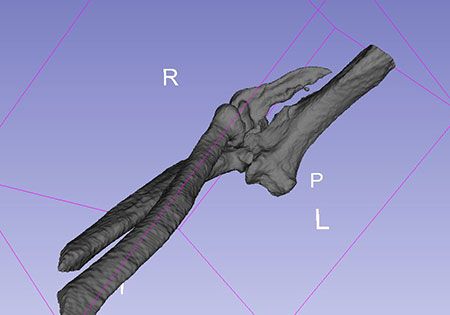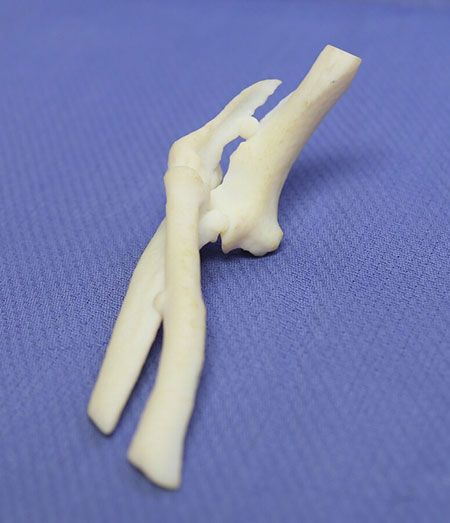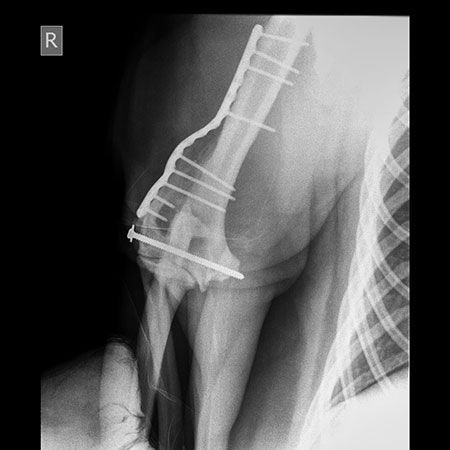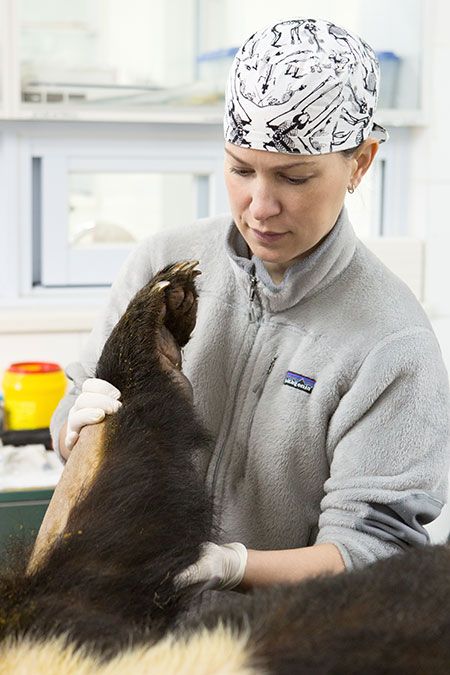How I used 3D printing in moon bear surgery
I'm sharing my experiences with dogs, moon bears and advanced technology at Fetch dvm360 in Baltimore. Heres what that looks like in my veterinary surgeries.
Here's a look at how computer tomCT scans and 3D printing have helped me diagnose, visualize and perform surgery on dogs and moon bears and get me excited for the future of veterinary technology.
Overseas adventures
Dr. Alane Cahalane shares her overseas veterinary adventures and the importance of recognizing the magical and the superhero moments in veterinary medicine in a very special keynote sponsored by Boehringer Ingelheim at Fetch dvm360 in Baltimore.
Canine case study: Mem Mem the bichon
Mem Mem had a chronic medial luxation of the proximal ulna and was referred to me for lameness a Hong Kong veterinarian. The elbow is a difficult joint to evaluate radiographically as the three bones come together in a complex way. I often recommend CT scans for elbow disorders in my patients so we can get the most detail possible through the image.
However, after seeing how complex Mem Mem's luxation was, I decided a 3D-printed model would best help conceptualize the surgery before it was performed.
There are few difficulties in producing a 3D model-all it takes is the CT scan. We have a 16-slice scanner that produces high-detail images quickly. As a result, Mem Mem only needed sedation for her scan. The 3D-printed model was then created using images from the CT.

CT scan of moon bear Claudia's bone. (All photos courtesy of Dr. Alane Cahalane)
Moon bear case study: Claudia
Claudia was rescued from cruel captivity by an organization called Animals Asia. In some parts of Asia, moon bears are captured and kept in tiny cages for the collection of their bile for traditional medicinal uses. The organization helps to rehabilitate these bears and give them happy, healthy lives. When Claudia broke her humerus, Animals Asia contacted me for help.
The fracture was complicated for a few reasons. For starters, humerus fractures are notoriously difficult to repair. The fracture also looked suspicious for incomplete ossification of the humeral condyle (IOHC)-a disease that occurs in dogs, particularly spaniel breeds, but has never been reported in a bear. As it develops, IOHC leaves a weak spot or crack in the humeral condyle, predisposing it to a break.
The purpose of the CT scan and subsequent 3D printing in Claudia's case was to model the fractured elbow for surgical planning but also to image the contralateral elbow to look for signs of IOHC. And we found it! The other elbow had a fissure in the humeral condyle, so we could plan for cross-condylar screw placement on that side to prevent fracture. It's the first bear that I know of to have this condition.

3D-printed bone
How 3D printing helped save the day
When 3D models are printed to scale, we can even prepare and contour implants pre-operatively.
Although the disease processes were different, 3D printing technology was used for similar purposes in these two patients: to plan for surgery. Mem Mem's 3D-printed elbow was printed to scale, meaning it was exactly the same size as her actual bones. Claudia's bones are so big that we had to print a smaller version, but it was still helpful for identifying surgical anatomy and landmarks. When 3D models are printed to scale, we can even prepare and contour implants pre-operatively.

Radiograph of Claudia four months postop.
A future for 3D printing in regular practice?
The biggest development of 3D printing (in my opinion) is how easily and readily available 3D printers are. You can even have one in your home if you want. We worked with different outside 3D printers for Mem Mem and Claudia, but we're considering purchasing an in-house 3D printer for future cases.
The future of 3D printing is already here. It's used in human medicine for limb prosthetics and complex cardiac conditions where a surgery can be performed on a model before it's performed on a child or high-risk patient. All we need to do as veterinarians is forge ahead, use the new technology and be creative!

Dr. Alane Cahalane examines a moon bear.
Dr. Alane Cahalane is CEO and cofounder of Veterinary Specialty Hospital of Hong Kong.